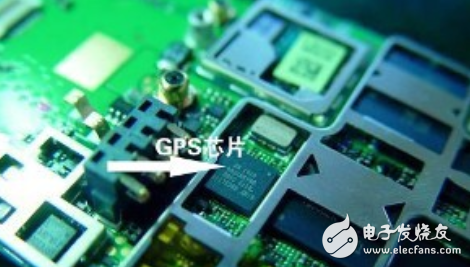GPS knowledge entry - features - classification articles: GPS core chip basic knowledge outlined. The following content is organized by the purchase network. For your reference.
GPS core chip basic knowledge introductionHere we introduce some basic knowledge of the GPS core chip, I hope you can help.
1. The Development and Prospect of GPS ChipsAfter 2003, the GPS chip industry has mushroomed. At present, there are more than 10 manufacturers that design and produce GPS chips, including SiRF, Garmin, Motorola, Sony, Fujitsu, Philips, Nemerix, uNav, and uBlox.
In 2005, SiRF acquired Motorola’s GPS chip business and will collaborate in the integration of GPS functionality in Motorola’s smartphones. Coincidentally, Qualcomm has also designed integrated GPS capabilities in the enhanced 3G mobile phone chip CDMA2000 EV-DO. Nextel is also using SiRF technology to implement GPS functionality in its handsets.
The United States has passed laws that require mobile phone manufacturers to integrate GPS receivers into their products in 2007 in order to provide location and emergency call capabilities. In 2007, it was the era of 3G. It can be seen that although the mobile phones integrated with the GPS function have not yet entered the mainstream market, the high-end models of 3G mobile phones will generally integrate GPS functions in the future.
In July 2005, Xi'an Huaxun Company, which was founded by five overseas scholars with the core of returning doctor Zhou Wenyi, also launched the first GPS chip in China.
Despite the number of vendors, SiRF currently has a similar position in the non-independent GPS industry as Intel in the PC industry, and almost all mainstream products use SiRF chips. Therefore, as long as readers understand several major models of SiRF chips, they can understand the core technology differences of non-independent GPS.
In addition, Garmin occupies half of the independent GPS device market, mainly uses Garmin's own chip products. Garmin is very similar to IBM in the IT field, from mapping software to GPS devices to core chips, and is an industry vertically integrated company. In some non-independent GPS areas, Garmin also uses SiRF chips.
Emerging GPS chip companies hardly have a foothold in the existing market. They have focused their attention on various IT devices that integrate GPS in the future, such as mobile phones, digital cameras, PDAs, notebooks, and even USB flash drives.
If integrated with a computing device, many functions of the GPS chip can be accomplished through software, and the cost can be further reduced. As early as 2004, SiRF has already launched such a simplified product? ? Software GPS. Philips also released a similar product that can support ARM processors, Xscale processors, and x86 processors to perform various GPS processing tasks. Integrated software GPS costs only 4 to 5 dollars.

The GPS chip is mainly composed of a radio frequency circuit, software (firmware), memory, and a processor.
Since the main use of laptops is non-independent GPS, then we will focus on SiRF's chip products here.
(1) SiRFstarIII
The SiRF chip released the latest third-generation chip SiRFstarIII (GSW 3.0/3.1) in 2004, making the civilian GPS chip reach a peak in performance, and the sensitivity is much higher than the previous product. This chip improves sensitivity by using 200,000 times/frequency correlators. The time for cold boot/warm boot/hot start is 42s/38s/8s respectively, and 20 satellite channels can be tracked at the same time. Many of the latest non-independent GPS receivers introduced in 2005 use this chip.
We strongly recommend users to purchase products equipped with this chip. Some of the products that use this chip are as follows:
- Fortuna SlimGPS - Bluetooth
- Globalsat BR-355 USB
- Globalsat BT-338-Bluetooth
- Globalsat SD-502 SDIO
- Guidetek GS-R238 (Holux sub-brand) - Bluetooth + USB
- Haicom 303iii CF
- Haicom 305iii CF
- Haicom BT405iii - Bluetooth
- Holux GR-213 USB
- Holux GPSlim 236 - Bluetooth + USB
- Leadtek 9553/L/X - Bluetooth
- Leadtek 9825 - Bluetooth
- Royaltek RBT-2001-Bluetooth
(2) SiRFstarIIe and SiRFstarIIe/LP
SiRFstarIIe is the first high-performance GPS chip released in 2002. SiRFstarIIe/LP (GSW2.3) is a low-power version of SiRFstarIIe. Both use 1920 times/frequency correlator. The time of cold boot/warm boot/hot start is 45s/35s/8s, respectively, and 12 satellite channels can be tracked at the same time. It should be said that the indicators of these two chips have already met the daily application requirements. The two types of chips were adopted in the non-independent GPS products introduced from 2003 to 2004.
Some products currently using this chip are as follows:
- Fortuna ClipOn Bluetooth
- Fortuna PocketXtrack CF
- Globalsat BR-305 (Semsons iTrek)
- Globalsat BT-308 (Dell/HP) Bluetooth
- Haicom HI303MMF CF
- Holux GM210 USB
- Holux GR230 - Bluetooth
- Royaltek RBT-1000 Bluetooth
- Royaltek RBT-3000 - Bluetooth
(3) SiRF XT2 and Xtrac
The SiRF XT2 chip adds a software function called Xtrac based on the SiRFstarIIe/LP. It enhances the positioning ability by tracking and analyzing weaker satellite signals, and has a certain role in indoor and in-vehicle signals where the signal is weak.
With weak signals, Xtrac can enhance GPS positioning capabilities. However, Xtrac can sometimes cause positioning errors due to the determination of weak signal errors, and may even result in positioning information errors, which are manifested at high speeds.
All in all, Xtrac is a technology that combines strengths and weaknesses, neither as powerful as SiRF's propaganda nor many problems.
Some products currently using this chip are as follows:
- Fortuna ClipOn Bluetooth
- Globalsat SD-501 - SDIO
- Haicom HI303S - CF
- Holux GR231 - Bluetooth
- Holux GM270U CF
- Royaltek RBT-1000 v2 - Bluetooth
The difference in performance of different GPS products mainly depends on the core chip. The technical indicators that you see when you purchase GPS are determined by the GPS chip. The future development of GPS is also determined by the core chip technology.
2.1 Home Theater Speaker,2.1 Speaker System Home Theater,Surround Sound Speakers,2.1 Home Theater
GUANGZHOU SOWANGNY ELECTRONIC CO.,LTD , https://www.jerry-power.com